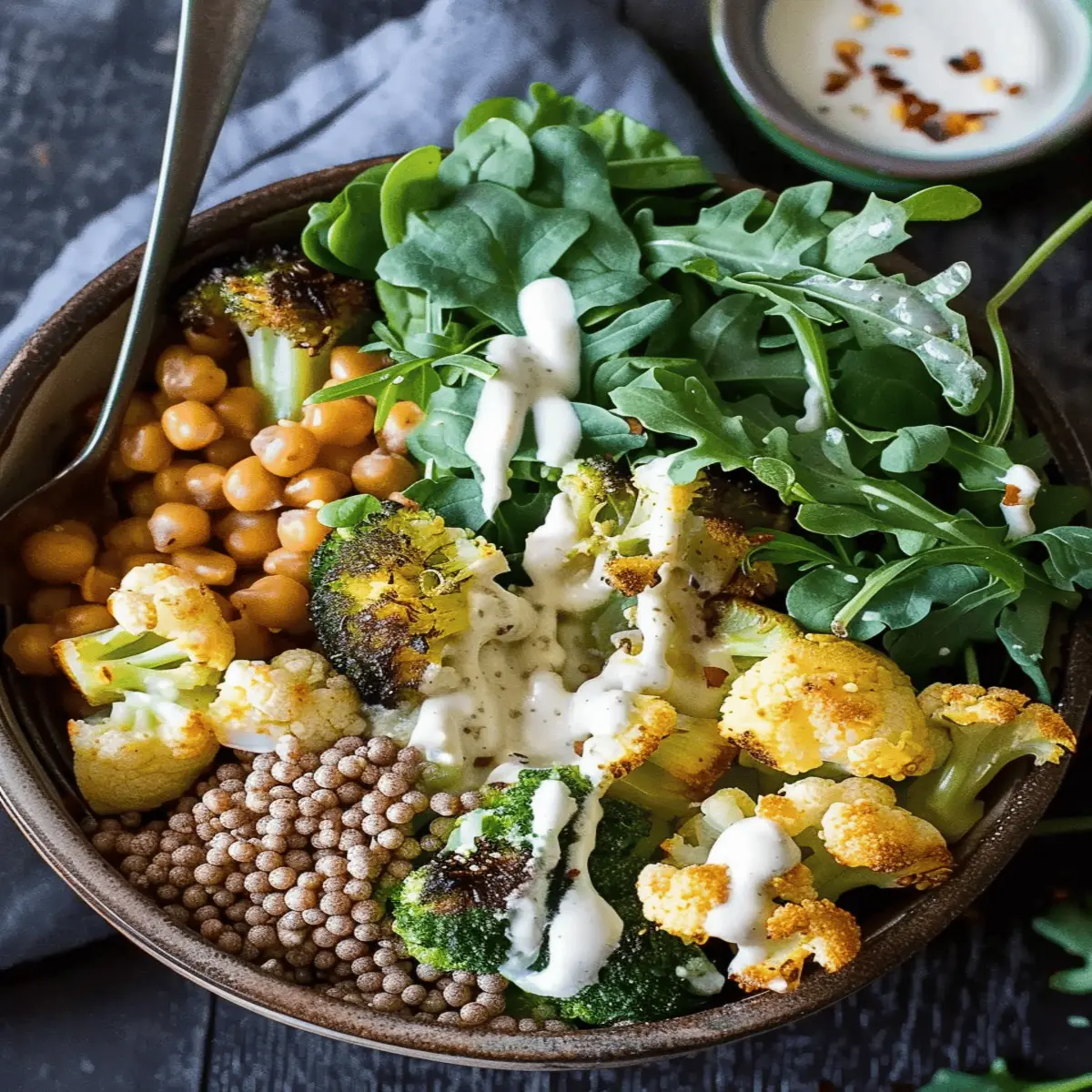Introduction to Veggie Bowls
When life gets busy, many young professionals find themselves gravitating toward meals that are not only nourishing but also uncomplicated. Enter veggie bowls—the ultimate comfort food that perfectly marries convenience with health. Imagine a vibrant, colorful mix of grains, vegetables, proteins, and sauces all in one bowl, ready to satisfy your hunger and fuel your day.
Why Veggie Bowls Are the Ultimate Comfort Food for Young Professionals
Veggie bowls are the epitome of flexibility, making them ideal for the young professional’s hectic lifestyle. Whether you’re juggling work, social commitments, or side projects, these bowls can be whipped up in no time—often within 30 minutes! Some expertly curated ingredients can truly elevate your meal, allowing you to enjoy a nutritious dish without investing too much time in the kitchen.
Here are a few compelling reasons why veggie bowls are a go-to for many:
-
Versatility: The beauty of veggie bowls lies in their adaptability. You can mix and match different vegetables, grains, and toppings based on your mood or what you have in your pantry. Craving something hearty? Add quinoa or brown rice. Prefer a lighter option? Go for spiralized zucchini or leafy greens.
-
Health Benefits: As per data from the CDC, increasing your vegetable intake can lower the risk of chronic diseases and improve overall well-being. Filling your bowl with a variety of colorful veggies ensures you’re getting a wide range of vitamins and minerals.
-
Convenience: With busy schedules, it’s tough to find time to cook – but with veggie bowls, meal prep can be efficient and stress-free. You can even prepare your ingredients ahead of time, so tossing everything together becomes a quick, enjoyable ritual.
-
Satisfying and Filling: A well-assembled veggie bowl can keep you full and energized throughout your day. Combine healthy fats, such as avocado or nuts, with protein sources like chickpeas or grilled tofu, and you’ve got yourself a balanced, satisfying meal.
So, why not join the veggie bowl movement? It’s about more than just food—it’s a lifestyle choice that puts nourishment and taste at the forefront. Check out our recipes to start crafting your veggie bowl masterpiece!
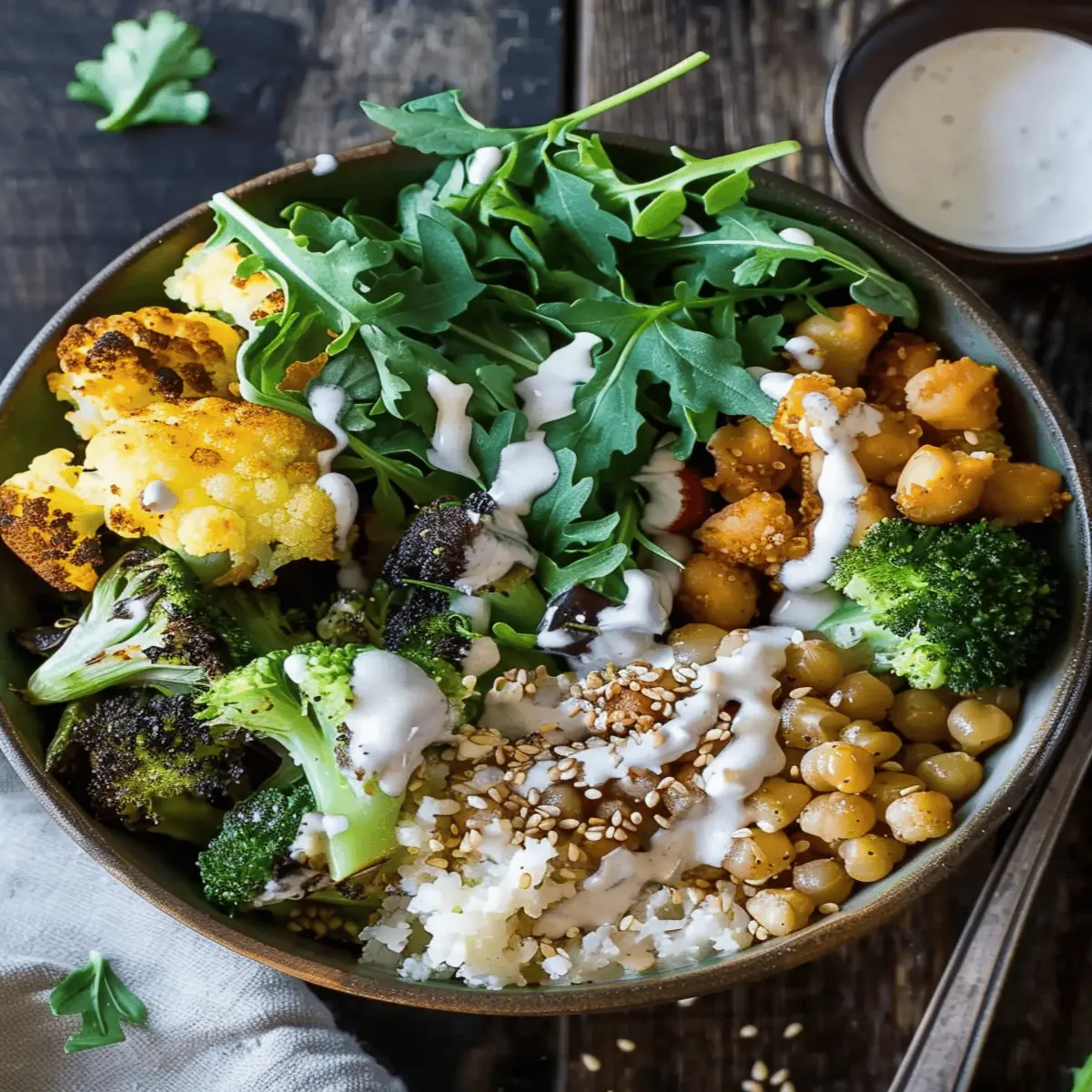
Ingredients for Veggie Bowls
Essential staples for a delicious veggie bowl
Creating wholesome veggie bowls starts with a solid foundation of fresh ingredients. Here are some essentials you won’t want to skip:
- Grains: Quinoa, brown rice, or farro make excellent bases packed with nutrients.
- Vegetables: Load up on colorful choices like bell peppers, spinach, sweet potatoes, or broccoli for a nutrient boost.
- Protein: Incorporate plant-based proteins like chickpeas, black beans, or tofu to keep you satiated.
- Healthy fats: Avocado or a handful of nuts can add creaminess and richness to your bowl.
For in-depth benefits of these ingredients, check out sources like Healthline and Harvard Health.
Optional toppings to elevate the experience
Now that you have the essentials, consider these optional toppings to take your veggie bowls to the next level:
- Dressings: A zesty tahini or a tangy vinaigrette can add layers of flavor.
- Herbs and Spices: Fresh cilantro or a sprinkle of smoked paprika can brighten up any bowl.
- Cheese: If you’re not vegan, a crumbled feta or a sprinkle of nutritional yeast can provide a savory finish.
Mix and match these elements to craft the perfect balance of taste and nutrition. Remember, the beauty of veggie bowls lies in their versatility. What unique flavor combinations will you whip up?
Preparing Veggie Bowls
Veggie bowls offer an incredible canvas for creativity in the kitchen. Whether you’re rushing home after a busy day or prepping for a weekend brunch, these bowls can be nutritious, delicious, and tailored to your specific tastes. So, grab your favorite mixing bowl and let’s dive into the steps for preparing your veggie bowls.
Choosing Your Base
The foundation of any excellent veggie bowl starts with a solid base. This could be:
- Grains: Think quinoa, brown rice, or farro, which offer nutrients and fullness.
- Greens: Mixed greens or spinach serve as a refreshing alternative, adding a light and crisp texture.
- Noodles: Zucchini noodles or soba noodles are fantastic for a low-carb option.
When selecting your base, consider what will complement your veggies and protein without overpowering them. Bonus tip: For more info on various grains’ health benefits, check out this health guide.
Picking the Perfect Veggies
Next up: veggies! Here’s where you can really let your personality shine.
- Seasonal options: Choose vegetables that are in season for optimal flavor and freshness. Try roasting sweet potatoes in the fall or incorporating vibrant bell peppers in the summer.
- Color diversity: A mix of colors not only makes your bowl visually appealing but also packs it with nutrients. Red tomatoes, green avocados, and purple cabbage create a feast for the eyes and body.
Pro tip: If you’re unsure about which veggies offer the most nutrients, this comprehensive veggie guide from the Academy of Nutrition and Dietetics can help you highlight the best choices.
Crafting Your Protein Options
Protein is the powerhouse that completes your veggie bowl. Depending on your dietary preferences, you have several choices:
- Plant-based proteins: Chickpeas, lentils, or tofu are fantastic for a veggie-focused meal.
- Animal-based proteins: Grilled chicken, fish, or eggs add essential amino acids and flavor.
Aim for about 20 grams of protein per serving to keep you satisfied. Personally, I love marinating tofu overnight to infuse flavor – it’s a game-changer in taste!
Assembling Your Veggie Bowl
Now comes the fun part: assembly! Start with your base and build from there.
- Layer: Start with grains or greens at the bottom.
- Add veggies: Place your favorite seasonal vegetables next, angling for that visual appeal.
- Include protein: Top with your chosen protein for a filling finish.
- Textures matter: Sprinkle some crunchiness with nuts, seeds, or crispy chickpeas.
Don’t forget about the visual aspect; a well-assembled veggie bowl can be as comforting as it is nourishing.
Whipping Up the Dressing or Sauce
A veggie bowl is almost incomplete without a little dressing or sauce to tie the flavors together. Here are a few simple ideas:
- Classics: Olive oil, lemon juice, and a hint of salt create a zesty finish.
- Creamy options: Tahini or avocado dressings add richness and depth.
- Spicy: Sriracha or harissa can elevate your bowl with a kick.
Experiment to find your perfect combination! A simple drizzle can transform your veggie bowls from ordinary to extraordinary. If you’re looking for specific recipes, dressing blogs or sauce guides are great resources to explore new flavors.
By following these straightforward steps, crafting a delicious, balanced veggie bowl can quickly become part of your weekly routine. Remember, the best recipes come from a blend of imagination and enjoyment. Happy bowl-making!
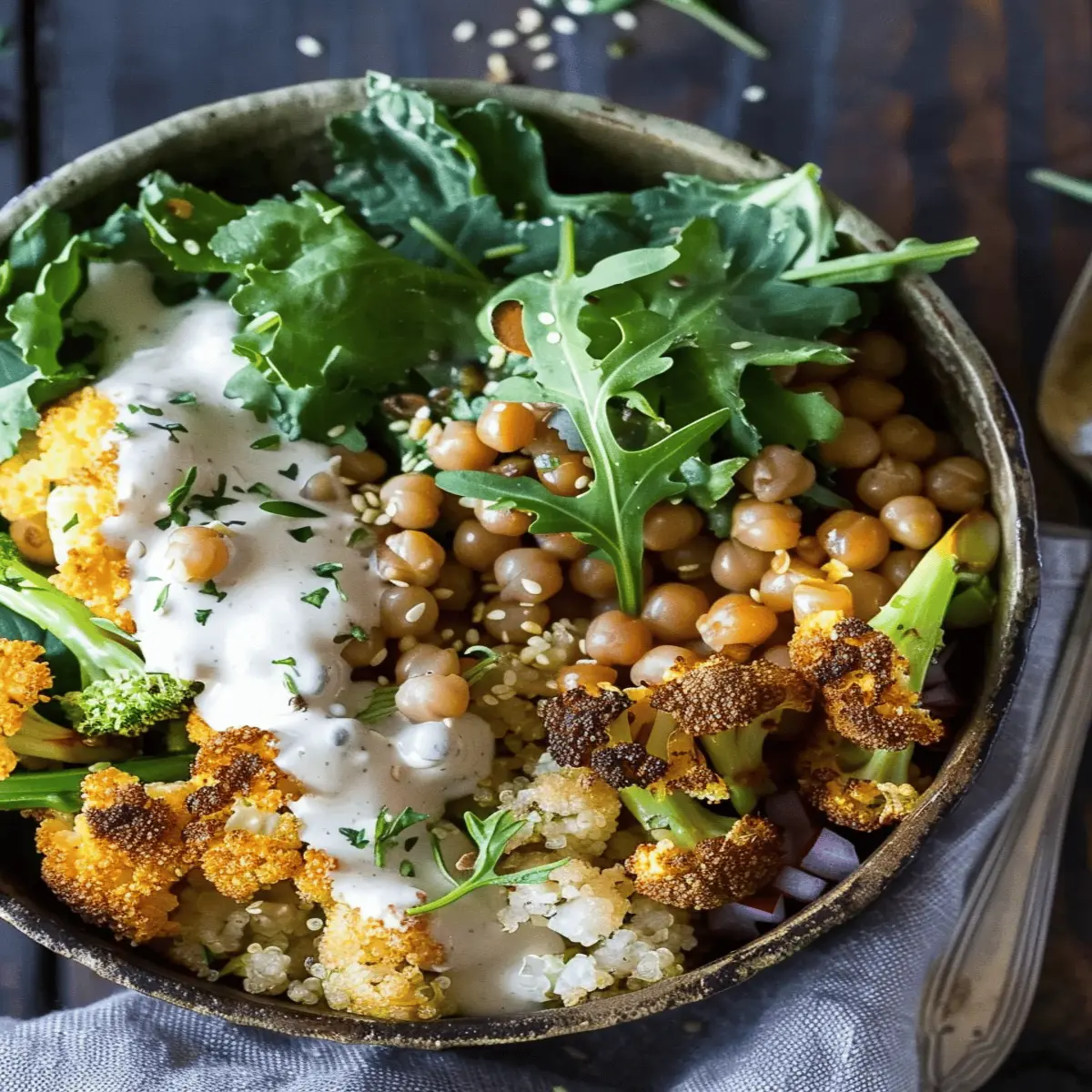
Variations on Veggie Bowls
Creating delicious veggie bowls doesn’t have to be monotonous. With a few tweaks, you can transport your taste buds around the globe. Let’s explore some creative variations!
Mediterranean-Inspired Veggie Bowl
Imagine savoring the sun-drenched flavors of the Mediterranean right from your kitchen. A Mediterranean-inspired veggie bowl typically includes:
- Quinoa or couscous as a base
- Roasted eggplant, zucchini, and bell peppers
- A generous handful of fresh spinach or arugula
- Creamy feta cheese or tangy olives
- Drizzle of olive oil and a sprinkle of za’atar
Not only is this bowl delightful, but it’s also packed with vitamins and healthy fats. According to a report by the Harvard T.H. Chan School of Public Health, diets rich in plant-based foods can improve heart health!
Asian Fusion Veggie Bowl
Looking to spice things up? An Asian fusion veggie bowl is the answer. Incorporate:
- Brown rice or soba noodles as your foundation
- Steamed or stir-fried broccoli, bok choy, and snap peas
- Tofu or edamame for that protein punch
- A splash of soy sauce or a drizzle of sesame oil
- Top with sliced avocado and green onions
But why stop there? An additional sprinkle of sesame seeds can add a nutty crunch that ties everything together. Want more ideas? Check out some awesome inspiration from NutritionalExperts.com.
Mexican-Style Veggie Bowl
Craving bold flavors? A Mexican-style veggie bowl might be your new go-to:
- Start with brown rice or grilled corn as a base
- Toss in black beans, corn, and diced tomatoes
- Add spicy roasted sweet potatoes or peppers
- A dollop of guacamole and fresh cilantro on top can elevate this dish to the next level
This bowl isn’t just tasty; it’s a celebration of vibrant flavors and nutrient-dense ingredients! Learn more about incorporating whole foods into your meals at WholeFoods.com.
These variations ensure that your veggie bowls never feel repetitive. Get creative, and you’ll find that the only limit is your imagination!
Cooking Tips and Notes for Veggie Bowls
How to Meal Prep for the Week
Preparing veggie bowls in advance can simplify your weeknight meals and save you a lot of cooking time. Start by selecting a couple of your favorite grains and proteins. For a balanced bowl, consider options like quinoa, farro, or brown rice paired with chickpeas or grilled tofu. Roast a variety of vegetables—think bell peppers, broccoli, and sweet potatoes—drizzled with olive oil and seasoning. Once everything is cooked, portion it into airtight containers for easy grab-and-go meals.
Best Practices for Preserving Freshness
To keep your veggie bowls fresh throughout the week, store dressings separately. This prevents your ingredients from becoming soggy. Using glass containers not only helps keep your bowls fresh but is also better for the environment (learn more about the benefits of using glass in this Healthline article).
Lastly, consider using silica gel packs to absorb moisture within your containers, ensuring your veggies stay crisp. With these tips, you’ll enjoy delicious and fresh meals, no matter how busy the week gets!
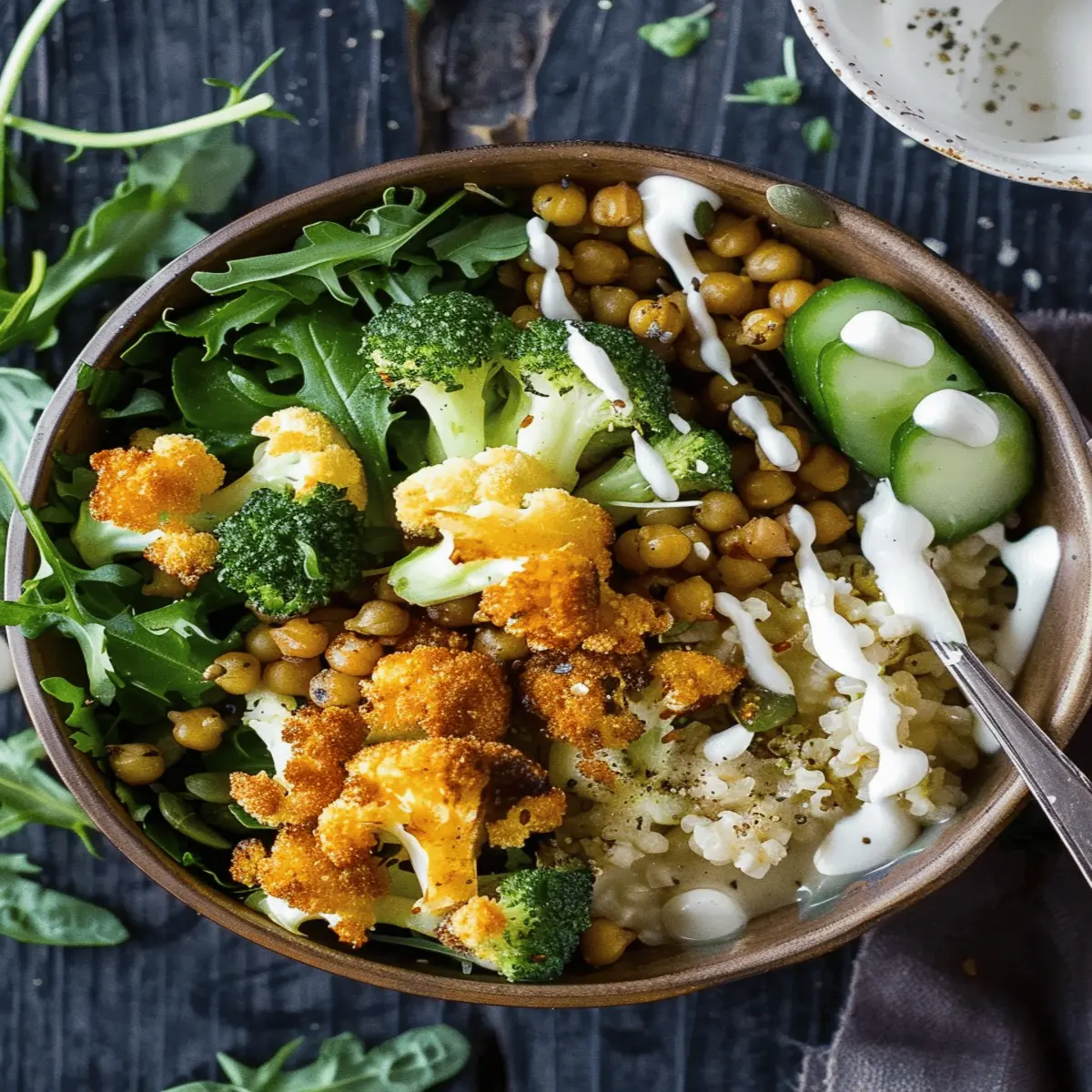
Serving Suggestions for Veggie Bowls
Bowl Pairings with Sides and Drinks
When it comes to veggie bowls, the right sides and drinks can elevate your meal from tasty to absolutely delightful. To enhance the experience, consider these pairing suggestions:
-
Side Dishes: Fresh salads, garlic bread, or roasted vegetables complement your veggie bowl beautifully. A zesty coleslaw adds a crunchy texture, while quinoa or couscous can bring a hearty feel.
-
Beverage Options: A chilled herbal iced tea or a zesty lemonade pairs wonderfully with the freshness of veggie bowls. If you’re in the mood for something stronger, craft beers or light white wines can also enhance the overall dining experience.
Wondering how to balance flavors? Opt for sides that contrast textures but share similar flavor profiles. For instance, a creamy avocado dip can pair beautifully with crispy veggie chips.
For a little inspiration, check out sources like Bon Appétit or Food Network to discover even more creative serving ideas. Happy bowl-making!
Time Breakdown for Veggie Bowls
Preparation Time
Getting your veggie bowls prepped is a breeze! You’ll need about 10-15 minutes to chop your favorite vegetables and gather your ingredients. This is the perfect time to let your creativity shine. Think about colorful bell peppers, crunchy cucumbers, and vibrant carrots. If you’re short on time, consider using pre-cut veggies from the store to save those precious minutes!
Cooking Time
For the cooking phase, you’re looking at approximately 15-20 minutes. This includes roasting or sautéing any veggies that need a little extra love. Keep an eye on them, and you’ll be rewarded with deliciously caramelized flavors.
Total Time
In total, you can whip up these delightful veggie bowls in 30-35 minutes. Choosing to add grains like quinoa or brown rice? Just factor in a little more time for those, typically around 20 minutes for cooking. By planning ahead, you’ll be serving wholesome, colorful meals in no time!
Interested in more time-saving kitchen tips? Check out this great resource from Food Network on meal prep strategies. Happy cooking!
Nutritional Facts for Veggie Bowls
Calories and Macronutrients
When it comes to veggie bowls, portion sizes are key. A typical serving clocks in around 350-500 calories, depending on the ingredients. With the right mix, you’ll find a balanced macronutrient profile:
- Carbohydrates: 40-60g, primarily from grains and veggies
- Protein: 10-20g, thanks to beans, tofu, or quinoa
- Fat: 10-20g, mainly from dressings and toppings
A variety of sources like the USDA provide guidelines on how you can maintain a balanced diet while enjoying these delicious dishes.
Vitamins and Minerals
One of the best parts about veggie bowls is their incredible nutrient density. You’ll typically get a healthy dose of:
- Vitamin A: Supports vision and immune function
- Vitamin C: Aids collagen formation and boosts immunity
- Iron: Essential for oxygen transport in the blood
- Potassium: Regulates blood pressure and heart function
Including a wide array of colorful vegetables not only brightens your bowl but also enriches your plate with a range of essential vitamins and minerals. According to studies, the more colors you add, the broader your nutrient intake.
So, as you explore different combinations, remember that you’re not just creating a meal — you’re nourishing your body. What’s your favorite veggie bowl combination?
FAQs about Veggie Bowls
Can I make veggie bowls vegan?
Absolutely! One of the best things about veggie bowls is their versatility. You can easily whip up a delicious vegan version by choosing the right ingredients. Start with a hearty base of grains like quinoa, brown rice, or farro. Then, load up on colorful veggies such as bell peppers, spinach, and sweet potatoes, and don’t forget your plant-based protein sources like chickpeas, lentils, or tofu. For some extra flavor, consider incorporating nuts or seeds. Want to kick things up a notch? Check out these vegan protein sources from Healthline.
What are some good dressing recipes for veggie bowls?
Dressing can elevate your veggie bowl and make it even more appealing. Here are a few simple yet delectable dressing ideas that you can try:
- Lemon-Tahini Dressing: Mix 3 tablespoons of tahini, juice of one lemon, a splash of water, and salt to taste.
- Creamy Avocado Dressing: Blend 1 ripe avocado, 1 tablespoon of lime juice, and a splash of water until smooth.
- Soy-Ginger Vinaigrette: Whisk together soy sauce, sesame oil, and fresh ginger for a zesty kick.
Each of these dressings can enhance the flavors of your veggie bowls beautifully.
How do I store leftover veggie bowls?
Leftovers can be a dream come true for busy young professionals! To store your veggie bowls, simply transfer any leftovers to an airtight container. They can last up to three days in the refrigerator. Just keep the dressing separate until you’re ready to eat to prevent sogginess. If you want to prep your meals for the week ahead, consider batch cooking your grains and veggies, allowing you to create fresh veggie bowls at a moment’s notice!
With these FAQs, you’re well on your way to becoming a veggie bowl pro. Enjoy experimenting and making the most of this creatively healthy dish!
Conclusion on Veggie Bowls
Embracing the Veggie Bowl Lifestyle for Your Health and Enjoyment
Veggie bowls aren’t just a trend; they’re a delightful way to elevate your meals while prioritizing your health. By incorporating a variety of fresh vegetables, grains, and proteins, you can create satisfying meals that boost your energy levels and enhance your mood. Consider the endless combinations and flavors you can explore—it’s a culinary adventure on your plate!
Plus, numerous studies emphasize the benefits of a plant-rich diet, showing that it can reduce the risk of chronic diseases and improve overall well-being. So, why not make veggie bowls your go-to choice? Start today, and enjoy both the health perks and the sheer joy of crafting delicious, colorful meals. Check out the Harvard T.H. Chan School of Public Health for more insights into nutritious eating!
Print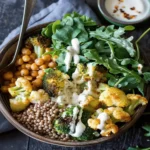
Veggie Bowls: Easy and Flavor-Packed for Any Home Cook
- Total Time: 35 minutes
- Yield: 4 servings 1x
- Diet: Vegan
Description
A guide to making delicious and healthy veggie bowls that are easy to prepare for any home cook.
Ingredients
- 1 cup quinoa
- 2 cups vegetable broth
- 1 cup cherry tomatoes, halved
- 1 cup cucumber, diced
- 1 cup bell peppers, diced
- 1 cup chickpeas, drained and rinsed
- 1/4 cup olive oil
- 2 tablespoons lemon juice
- 1 teaspoon garlic powder
- 1/2 teaspoon salt
- 1/4 teaspoon black pepper
Instructions
- Rinse quinoa under cold water.
- In a pot, cook quinoa in vegetable broth according to package instructions.
- In a large bowl, combine cherry tomatoes, cucumber, bell peppers, and chickpeas.
- In a small bowl, whisk together olive oil, lemon juice, garlic powder, salt, and pepper.
- Once quinoa is cooked, fluff with a fork and add to the vegetable mixture.
- Drizzle dressing over the salad and toss to combine.
- Serve immediately or chill in the refrigerator for later.
Notes
- Feel free to add any other vegetables you like.
- Adjust seasoning to your taste.
- Prep Time: 15 minutes
- Cook Time: 20 minutes
- Category: Salad
- Method: Stirring
- Cuisine: Mediterranean
Nutrition
- Serving Size: 1 bowl
- Calories: 350
- Sugar: 2g
- Sodium: 400mg
- Fat: 15g
- Saturated Fat: 2g
- Unsaturated Fat: 10g
- Trans Fat: 0g
- Carbohydrates: 45g
- Fiber: 8g
- Protein: 12g
- Cholesterol: 0mg
Keywords: Veggie Bowls, Healthy Recipe, Vegetarian
